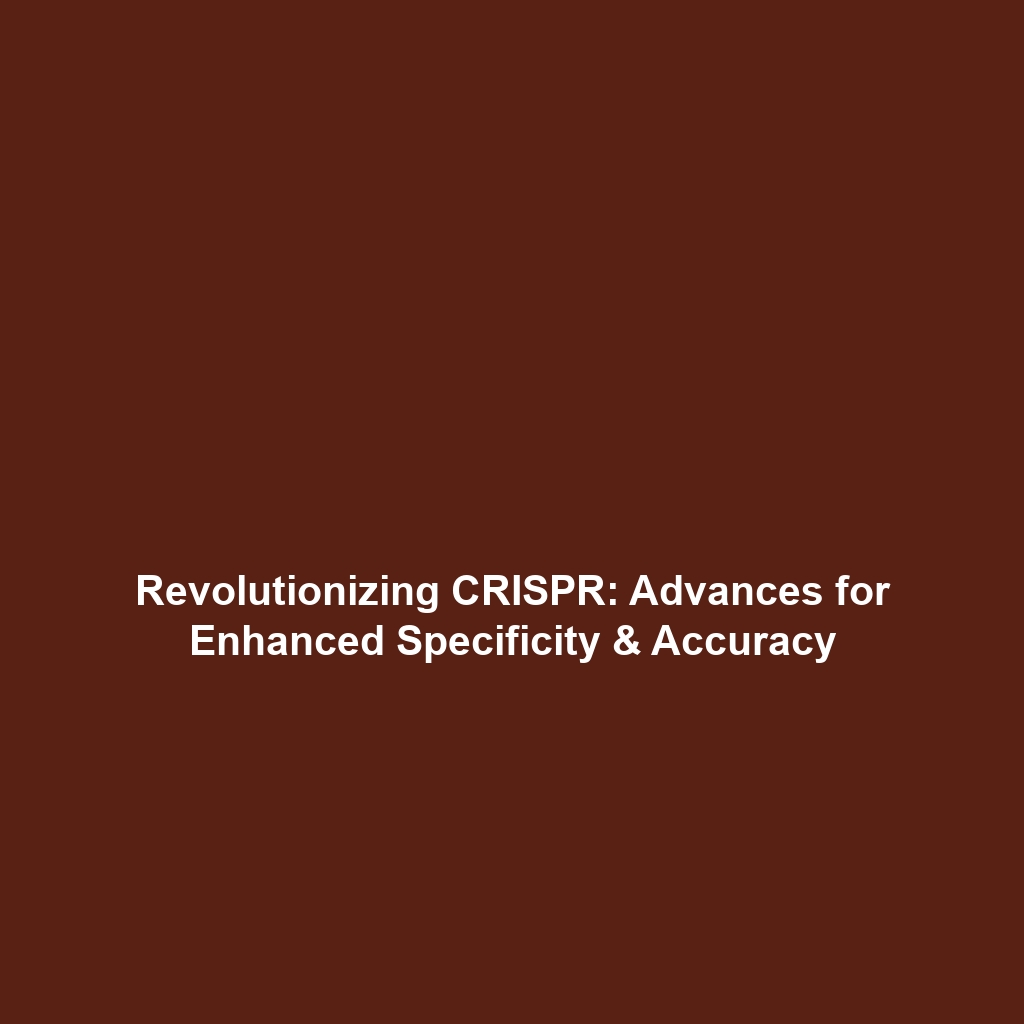Advances in CRISPR Systems for Higher Specificity and Accuracy
Introduction
CRISPR gene editing has revolutionized biotechnology and medicine, providing unprecedented tools for precise genome modifications. This article explores the advances in CRISPR systems that enhance specificity and accuracy, fundamental traits necessary for reducing off-target effects and improving therapeutic outcomes. Innovations in this area not only promise to refine the capabilities of CRISPR gene editing but also significantly advance our understanding of genomic functions and disease pathologies. As researchers delve into enhancing the precision of these systems, the implications for various fields such as genetics, agriculture, and medicine grow increasingly impactful.
Key Concepts
The principles behind CRISPR systems are rooted in their ability to locate and modify specific sequences within the DNA. Advances in these systems aim to:
- Improve Recognition Mechanisms: Innovations like enhanced Cas9 proteins and novel guiding RNA designs that accurately target desired sequences.
- Reduce Off-Target Effects: Development of improved bioinformatics tools that predict unintended modifications in the genome.
- Refine Delivery Methods: Optimizing vectors and nanoparticle-based systems that increase the efficiency of gene delivery.
These advancements are vital to the ongoing refinement of CRISPR gene editing applications, ensuring they can be used safely and effectively in a variety of settings.
Applications and Real-World Uses
Advances in CRISPR systems for higher specificity and accuracy lead to significant applications across various fields:
- Medical Research: CRISPR is being used to develop precise gene therapies for genetic disorders, such as sickle cell anemia.
- Crop Improvement: Innovative CRISPR techniques are enhancing the resistance of crops to diseases, pests, and environmental stresses.
- Biotechnological Developments: CRISPR-based tools are being utilized to engineer microorganisms for more efficient biofuels production.
These real-world uses underscore how advances in CRISPR systems are crucial for the future of CRISPR gene editing.
Current Challenges
Despite the promising innovations within CRISPR systems, several challenges hinder their widespread application:
- Unintended off-target modifications can lead to adverse effects.
- Ethical concerns regarding gene editing in human embryos and germline modifications.
- Regulatory hurdles in the approval processes for therapeutic applications.
These issues underscore the need for ongoing research and discussion about the implications of advances in CRISPR systems.
Future Research and Innovations
The future of CRISPR gene editing looks promising, with ongoing research focusing on:
- Next-Generation CRISPR Technologies: Innovations such as base editing and prime editing, which offer unparalleled specificity.
- Machine Learning Algorithms: Employing AI to predict potential outcomes and optimize gene editing processes.
- Improved Delivery Mechanisms: New methods to deliver CRISPR components more effectively to target cells.
These breakthroughs are set to enhance the capabilities of CRISPR gene editing, facilitating its role in advanced therapeutic strategies.
Conclusion
Advances in CRISPR systems for higher specificity and accuracy represent a pivotal development in the field of CRISPR gene editing. By addressing current limitations and exploring innovative applications, researchers are paving the way for more effective and safer gene therapies. Continuing these efforts is essential for unlocking the full potential of CRISPR technology in medicine, agriculture, and beyond.
For further reading on related topics, explore our sections on Gene Editing Techniques or Biotechnology Innovations.

Leave a Reply